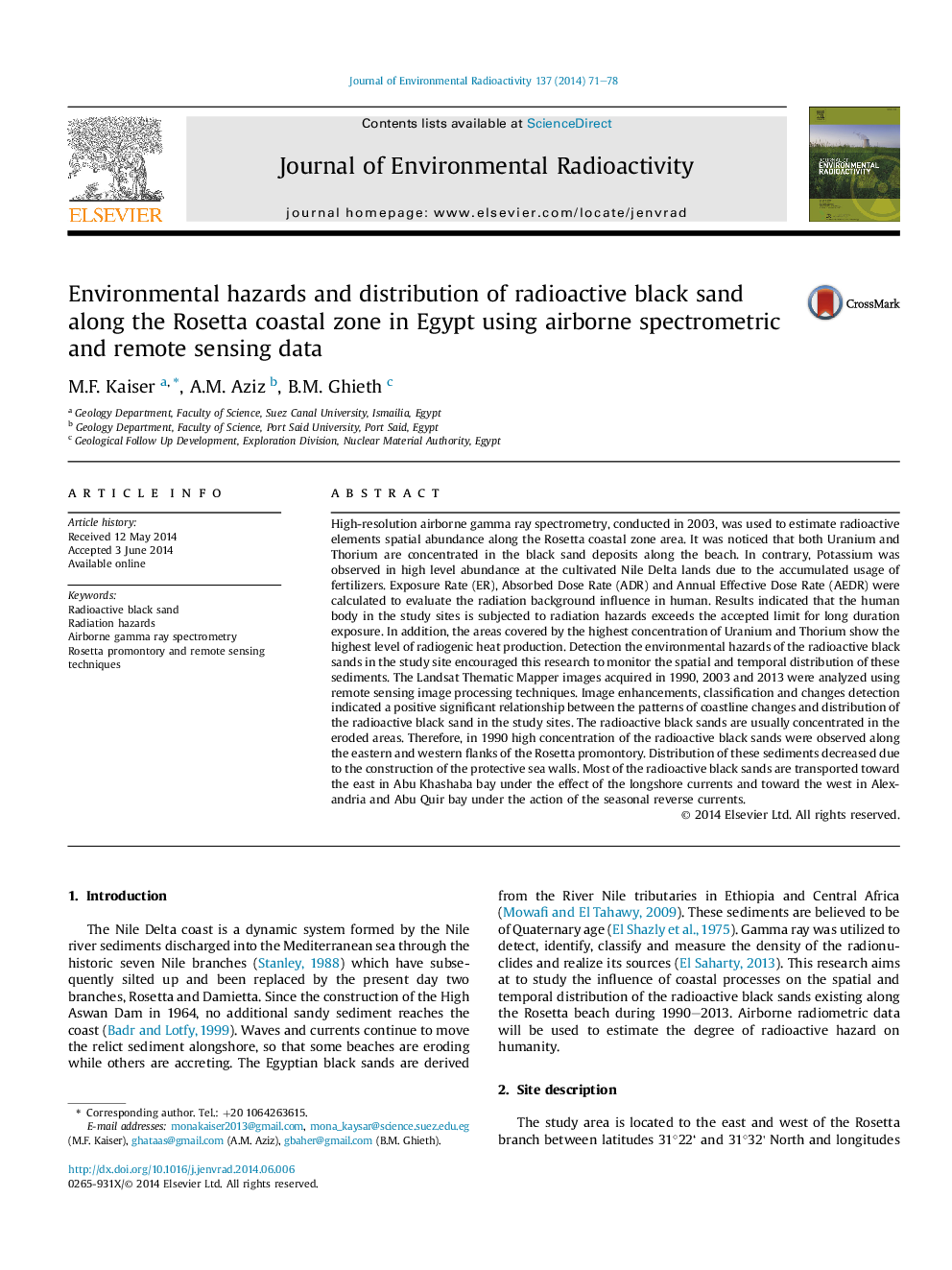| کد مقاله | کد نشریه | سال انتشار | مقاله انگلیسی | نسخه تمام متن |
|---|---|---|---|---|
| 8082942 | 1521596 | 2014 | 8 صفحه PDF | دانلود رایگان |
عنوان انگلیسی مقاله ISI
Environmental hazards and distribution of radioactive black sand along the Rosetta coastal zone in Egypt using airborne spectrometric and remote sensing data
ترجمه فارسی عنوان
خطرات زیست محیطی و توزیع شن و ماسه سیلیسی رادیواکتیو در منطقه ساحلی روزتا در مصر با استفاده از داده های سنجش از دور و دور سنج
دانلود مقاله + سفارش ترجمه
دانلود مقاله ISI انگلیسی
رایگان برای ایرانیان
موضوعات مرتبط
مهندسی و علوم پایه
مهندسی انرژی
انرژی هسته ای و مهندسی
چکیده انگلیسی
High-resolution airborne gamma ray spectrometry, conducted in 2003, was used to estimate radioactive elements spatial abundance along the Rosetta coastal zone area. It was noticed that both Uranium and Thorium are concentrated in the black sand deposits along the beach. In contrary, Potassium was observed in high level abundance at the cultivated Nile Delta lands due to the accumulated usage of fertilizers. Exposure Rate (ER), Absorbed Dose Rate (ADR) and Annual Effective Dose Rate (AEDR) were calculated to evaluate the radiation background influence in human. Results indicated that the human body in the study sites is subjected to radiation hazards exceeds the accepted limit for long duration exposure. In addition, the areas covered by the highest concentration of Uranium and Thorium show the highest level of radiogenic heat production. Detection the environmental hazards of the radioactive black sands in the study site encouraged this research to monitor the spatial and temporal distribution of these sediments. The Landsat Thematic Mapper images acquired in 1990, 2003 and 2013 were analyzed using remote sensing image processing techniques. Image enhancements, classification and changes detection indicated a positive significant relationship between the patterns of coastline changes and distribution of the radioactive black sand in the study sites. The radioactive black sands are usually concentrated in the eroded areas. Therefore, in 1990 high concentration of the radioactive black sands were observed along the eastern and western flanks of the Rosetta promontory. Distribution of these sediments decreased due to the construction of the protective sea walls. Most of the radioactive black sands are transported toward the east in Abu Khashaba bay under the effect of the longshore currents and toward the west in Alexandria and Abu Quir bay under the action of the seasonal reverse currents.
ناشر
Database: Elsevier - ScienceDirect (ساینس دایرکت)
Journal: Journal of Environmental Radioactivity - Volume 137, November 2014, Pages 71-78
Journal: Journal of Environmental Radioactivity - Volume 137, November 2014, Pages 71-78
نویسندگان
M.F. Kaiser, A.M. Aziz, B.M. Ghieth,
